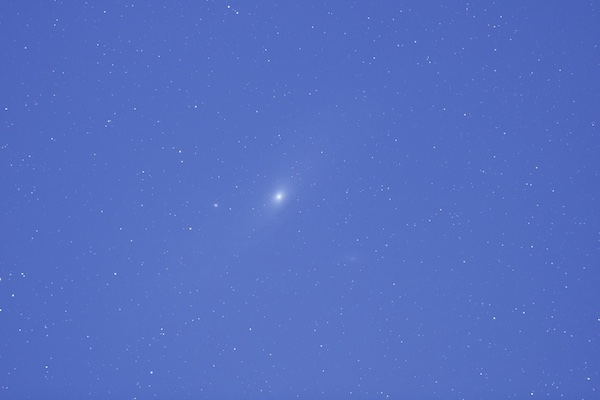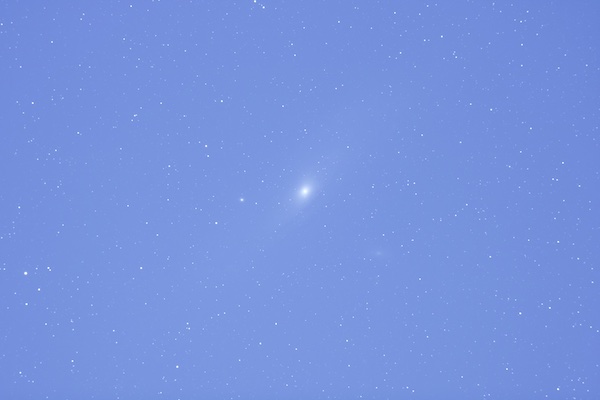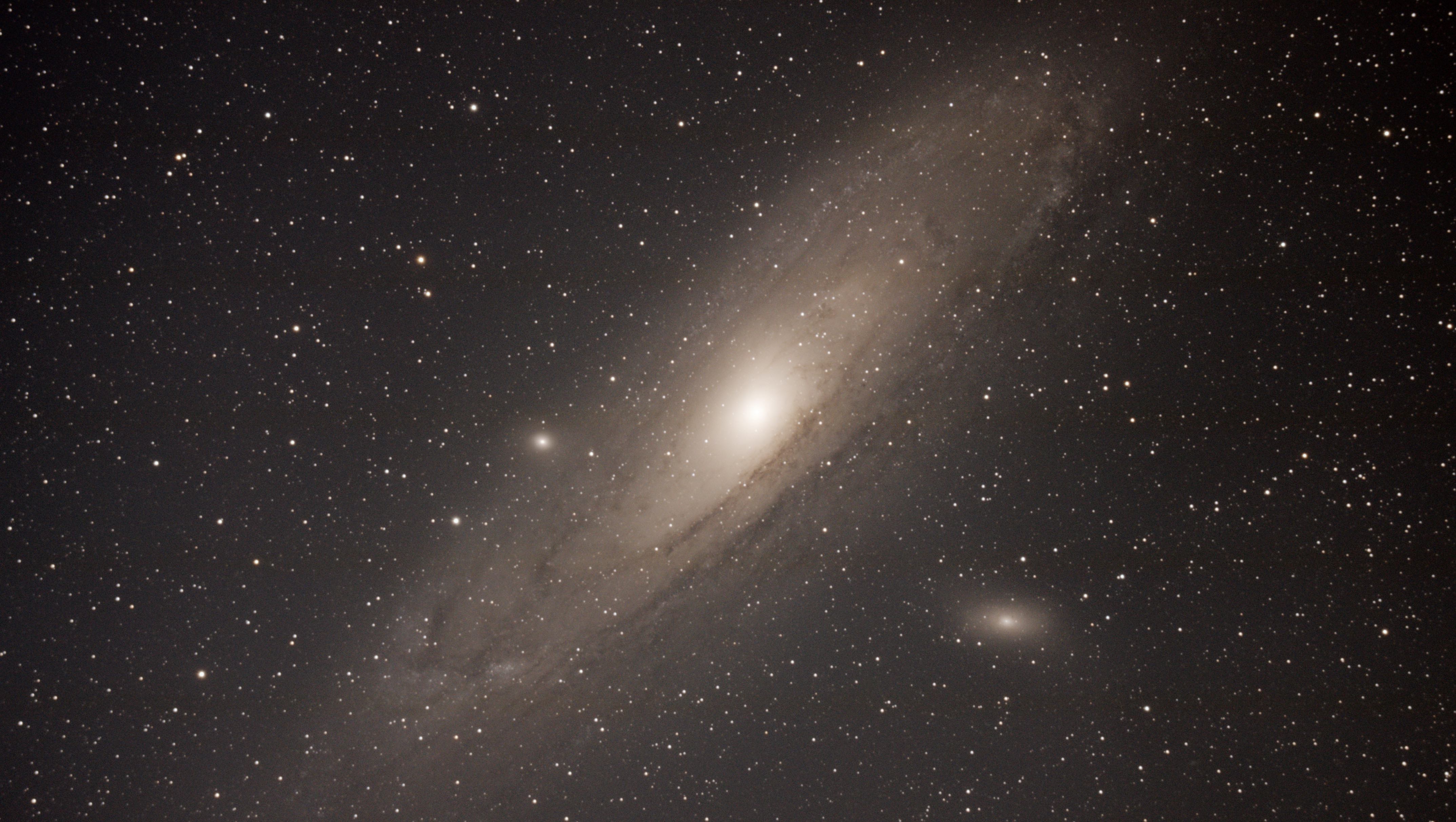Andromeda Galaxy
The Andromeda Galaxy is a spiral galaxy with diameter of about 220,000 light years, approximately 2.5 million light-years from Earth and the nearest large galaxy to the Milky Way.
It was the very first target I shot with my new William Optics GT71 telescope. After months of waiting for the telescope to arrive and then for the weather to clear up, I just had to take advantage of two nights with clear sky, even if the Moon was > 86% illumination.
Being the first deep sky object with a new telescope, I spent a lot of time under the night sky, playing with the focuser and the Bahtinov mask, enjoying the new toy and playing with the ZWO ASI 120mm camera used for tracking. From my experience, introducing a new object or change in your astro-photography shooting session will require a learning curve, no matter how much research you do before the shooting session. First night out with my new William Optics GT71 was a great success considering the Moon illumination and the limited amount of time I had for shooting the target.
The brightness of the nightly sky can be seen in the first two single shots presented in the gallery, followed by the final processed image.



You can also download the full size high resolution image. Download (78 MB)
The image was taken via tracking with the ZWO ASI 120mm and with dithering, although I am not confident that the error tracking values were really the bests. Still the PHD2 tool was showing that it was tracking and I was not able to observe any star trailing.
Lots of things to improve in both the acquisition and processing phases, like optimizing the time spent under the night sky by imaging and not adjusting stuff or even a better dedicated camera, I’m still extremely happy with the first deep sky object image.
